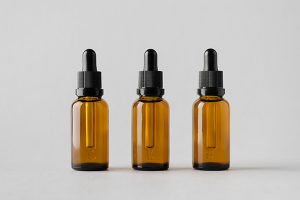Updated on July 17, 2020.
 What are SARMs?
What are SARMs?
Selective Androgen Receptor Modulators (SARMs) are a class of therapeutic compounds that have similar anabolic properties to anabolic steroids, but with reduced androgenic (producing male characteristics) properties. As an example, the androgen receptor is activated by binding androgens, such as testosterone. Unlike anabolic steroids, which bind to androgen receptors in many tissues all over the body, individual SARMs selectively bind androgen receptors in certain tissues, but not in others.
In medical settings, this could be very useful for stimulating specific tissue growth like muscle and bone, while avoiding unwanted side effects in other tissues like the liver or skin. SARMs are being evaluated as a clinical treatment for muscle-wasting caused by several diseases, such as osteoporosis, cancer, heart failure, chronic obstructive pulmonary disease, end-stage liver disease, end-stage renal disease, and HIV.
To date, all SARMs are for investigational purposes only.
Are SARMs prohibited on the World Anti-Doping Agency (WADA) Prohibited List?
All SARMs are prohibited at all times (both in and out-of-competition) for all athletes, from those competing at the highest level of sport to those competing at the recreational level. SARMs are listed in the category of “Other Anabolic Agents” under section S1.2 of the WADA Prohibited List.
Examples of SARMs include: ostarine (Enobosarm, MK 2866), andarine, LGD-4033 (ligandrol), and RAD140.[3] SARMs have the potential to be misused for performance enhancement in sport due to their anabolic properties, as well as their ability to stimulate androgen receptors in muscle and bone, leading to bone and muscle growth.
What if my doctor prescribes a SARM for me?
There are no Food and Drug Administration (FDA)-approved SARMs currently available for prescription. All SARMs are investigational drugs, so it is not legal for your doctor to prescribe a SARM. Athletes who would like to participate in clinical trials involving prohibited substances should contact USADA for a Therapeutic Use Exemption (TUE).
What are the health risks associated with SARMS?
The FDA has warned consumers about potential life-threatening side effects from SARMs, including an increased risk of heart attack and stroke.
The long-term effects of using SARMs are unknown.
Can SARMs be found in dietary supplements?
SARMs are not legal ingredients for any dietary supplements. However, there are many dietary supplements on the market that are contaminated with, or advertise to contain, SARMs.
Currently, there are more than 120 of these products listed on the Supplement Connect High Risk List. Dietary supplements containing SARMs could pose significant health risks to athletes and cause a positive test. Athletes should be aware that SARM ingredients could be listed on dietary supplement product labels under various names.
The following are examples of SARMs that are frequently and illegally marketed in dietary supplements or as research chemicals:
- Ostarine (Enobosarm, MK2866, S22)
- Andarine (S4)
- LGD-4033 (Ligandrol)
- LGD-3033
- TT-701
- RAD140 (Testolone)
- S23
The following prohibited substances are also sometime marketed as SARMs:
- SR9009 (Stenabolic)
- Ibutamoren (MK-677, Nutrabol)
- GW501516 (GW1516, Cardarine, Endurobol)
- YK-11
What are the number of Adverse Analytical Findings (AAFs) for SARMs?
SARMs were added to the WADA Prohibited List in 2008 and the first AAF with a SARM drug candidate was reported in 2010. Since then, there has been a steady increase in the number of AAFs involving SARMs reported globally. In the U.S., SARMs have been associated with more than 50 sanctions, and globally, SARMs have accounted for more than 230 positive tests since 2012.
Resources:
[1] Zhang X, Sui Z. Deciphering the selective androgen receptor modulators paradigm. Expert Opin Drug Discov. 2013;8(2):191-218. http://www.ncbi.nlm.nih.gov/pubmed/23231475
[2] Chen J, Kim J, Dalton J. Discovery and therapeutic promise of selective androgen receptor modulators. Mol Interv. 2005;5(3):173-188. http://www.ncbi.nlm.nih.gov/pmc/articles/PMC2072877/
[3] Geyer H , Schänzer W, Thevis M. Anabolic agents: recent strategies for their detection and protection from inadvertent doping. Br J Sports Med 2014;48:820-826. http://bjsm.bmj.com/content/48/10/820.full. Photo credit to this article, Figure 6, p. 5.
[4] Knoop A, Krug O, Voncenti M, Schanzer W, Thevis M. In vetro metabolism studies on the selective androgen receptor modulator (SARM) LG121071 and its implementation into human doping controls using liquid chromatography-mass spectrometry. Eur J Mass Spectrom 2015;21(1):27-36. http://www.ncbi.nlm.nih.gov/pubmed/25906032
[5] U.S. Department of Defense Dietary Supplement Resource. SARMS: What’s the harm? Retrieved July 17, 2020, from https://www.opss.org/article/sarms-whats-harm
[6] U.S. Food and Drug Administration, Department of Health and Human Services. Biogenix USA, LLC warning letter, December 11, 2014. Retrieved November 12, 2015, from http://www.fda.gov/ICECI/EnforcementActions/WarningLetters/ucm434928.htm
[7] World Anti-Doping Agency (WADA) Laboratory Testing Statistics. Accessed July 2020, from https://www.wada-ama.org/en/resources/laboratories/anti-doping-testing-figures-report
Read more Spirit of Sport blog posts



